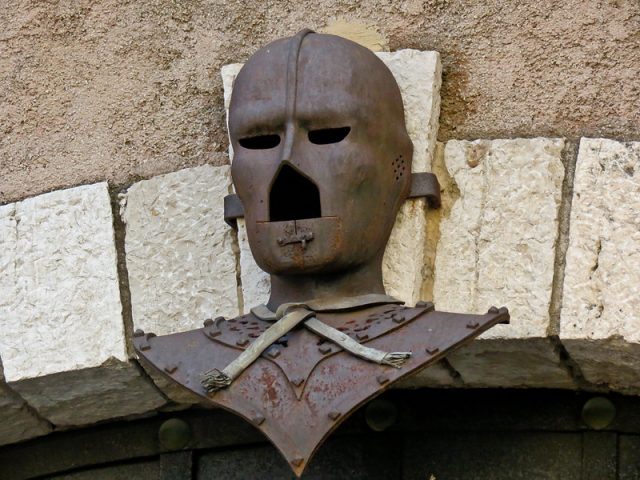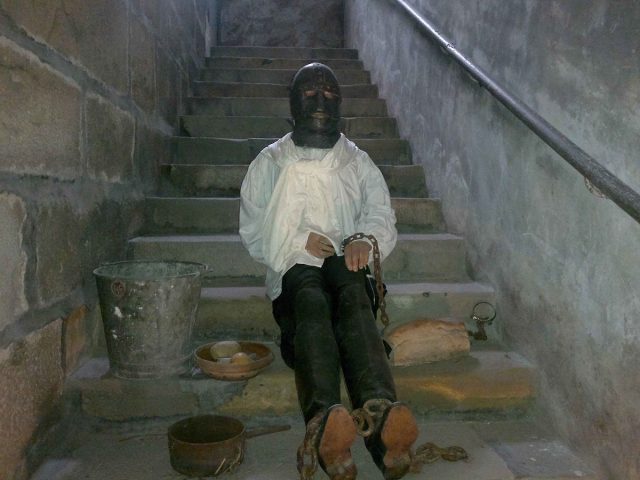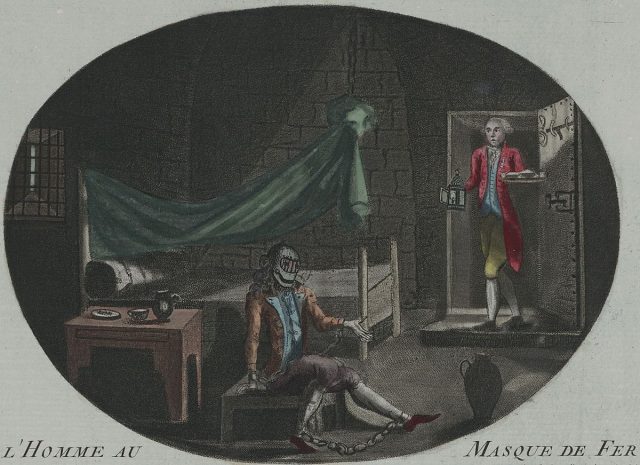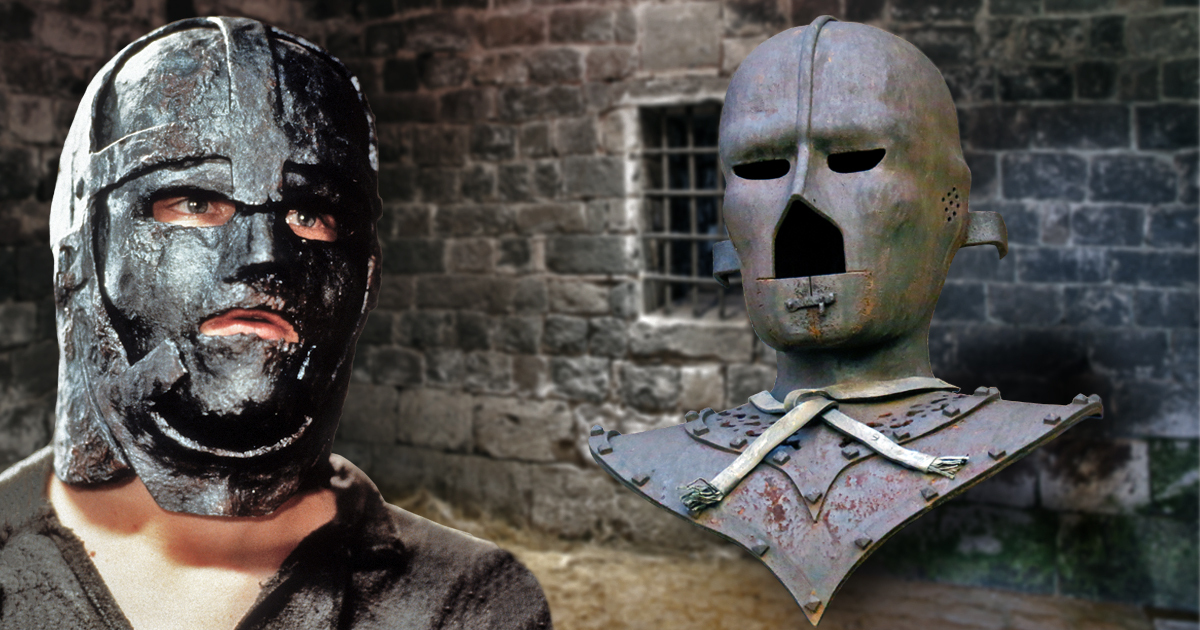The mystery of the man in the iron mask lives on. There is nothing like a disguise to ramp up intrigue and mystique, and those qualities were there in spades when it comes to the French prisoner known only as “The Man in the Iron Mask.” He was put in jail in prisons all over France, beginning with one off the coast of Cannes in 1669 or 1670 — historians differ on this point. But they agree that he stayed imprisoned for a total of 34 years, ending in the Bastille, the country’s most notorious jail, in 1703.
Who he was, and what he did to deserve his sentence, are still being hotly debated by scholars, and conspiracy theorists alike. But one aspect of the prisoner’s fate is not argued; his face was covered, either by iron or fabric of some kind, perhaps velvet. Either way, the disguise was used by officials to hide his true identity, and even today his supposed crimes are not fully clear, or fully understood.
Some insist the man was a political enemy of King Louis XIV, who ruled France during the period. One camp theorizes that the prisoner was in fact an Italian nobleman, Ercole Matthiole, who conspired against the king, plotting with his rivals to ruin him. Voltaire, the great French philosopher and writer, posited that he was, perhaps, the king’s older, illegitimate brother.

Another suggestion was that he was, in truth, the king’s actual father, and that revealing his identity would not just ruin the king but besmirch his mother. Speculations abounded in French social circles and the ruling political class, but no one ever revealed who the man actually was. Jailers went to great lengths to keep his name from becoming known — hence, the mask, and he was kept in a cell all by himself at all times.

And it wasn’t only while he was alive that the man’s identity and crimes were kept under wraps. After his passing, all his clothing was incinerated and his cell was, the story goes, completely wiped down, to remove all traces of him.

But the fact that no one knew decisively who the man was, at least no one outside the various prisons that held him, didn’t stop the rumors from spreading and the innuendo from flying far and wide. His story was even written about by famous French novelist Alexandre Dumas, author of “The Three Musketeers.”
Dumas wrote a book entitled “L’Homme au Masque,” or, in English, “The Man In The Iron Mask.” He suggested that the prisoner was indeed the king’s brother, but for various reasons had to be hidden away. It was called “historical fiction,” meaning that the story was based on something Dumas believed was true, or at the very least possible.
In the book, the imprisoned character is called Phillipe, and he is the twin brother of Louis XIV, who is ruling France when the story begins. One of the musketeers, about whom Dumas had previously written, Aramis, goes to visit the man in jail, along with a bishop. The trio plots to switch Phillipe with his brother so Aramis can work with him to rule the country his way, and with the help of one of the king’s advisers, the switch succeeds. Naturally, however, all kinds of things go awry, and the rest of the plot is filled with devious political machinations straight out of a modern soap opera.
Related Article: 9,000-yr-old Stone Mask Gives Face to Ancient Culture
Dumas may have been one of the first writers to take up the story of the man and his mask, but he was certainly not the last. Many articles, books, films and other media outlets have told his story too; in 1977, Richard Chamberlain starred in a film version of the book.
So did Leonardo DiCaprio, in 1998. Because no one truly knows with absolute certainty who he was, the man in that mask was ripe for guess work and back story, a story filled with intrigue, political maneuvering and double dealing — how could Hollywood resist?
